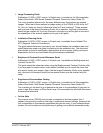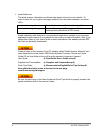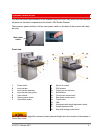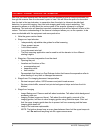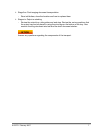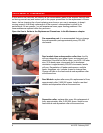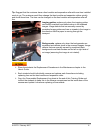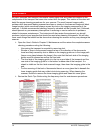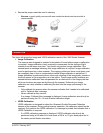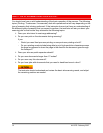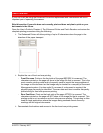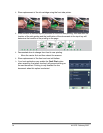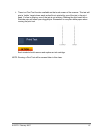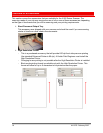
A-61579 February 2007 11
¾Review the proper materials used in cleaning
- Vacuum: a good quality vacuum with non-conductive brush and crevice tool is
recommended.
896 5519 853 5981 169 0783
CALIBRATION
This topic will review the Image and UDDS calibration needs of the i1800 Series Scanner.
¾Image Calibration
The scanner was designed to operate for hundreds of hours before image re-calibration
is required. Image calibration is only required to compensate for the change of light
intensity from the lamps over time. You should only perform image calibration if the
scanner posts a message indicating that image calibration is required. Image calibration
must be performed on a clean scanner. The imaging guides and lower cover glass must
be completely free of dust or contamination before Image calibration is performed. If
Image calibration is performed without a thorough cleaning of the image path, streaks or
lines will appear in the image after just a few scans. These image quality problems are
caused because calibration has compensated for an obstruction in the image path that
will move locations as pages are fed through the scanner. Performing an Image
calibration on a dirty scanner is calibrating the dust into the image processing of the
scanner.
- Only calibrate the scanner when the scanner indicates that it needs to be calibrated
with a ‘Calibrate Now’ message.
- Never calibrate a dirty scanner.
- If an image ‘Calibrate Now’ message is displayed, Image calibration should only be
performed using the 12 x 12-inch all-white calibration target.
¾UDDS Calibration
UDDS calibration is designed to adjust the Ultrasonic Double Document Detection
sensors of the scanner. During normal scanner operation, this calibration should not be
required. Only perform the UDDS calibration if a message is posted that indicates that a
UDDS Calibration is required.
- If a UDDS calibration message is displayed, UDDS calibration should only be
performed using a US letter or A4 size sheet of 20 lb. or 75 g/m
2
bond paper fed in
the center portrait feeder orientation.



